Disclosure: Meeple Mountain received a free copy of this product in exchange for an honest, unbiased review. This review is not intended to be an endorsement.
The town of Bosa boasts a population slightly smaller than my little western Pennsylvania town. A hillside community along the coast of Italy’s Sardinia region, Bosa is primed for a travel brochure with its colorful, charming row houses and its medieval Castle of Serravalle. It is also primed for a tableau-building card game that mimics said row houses.
I’ll just say up front: Bosa has been a delight.
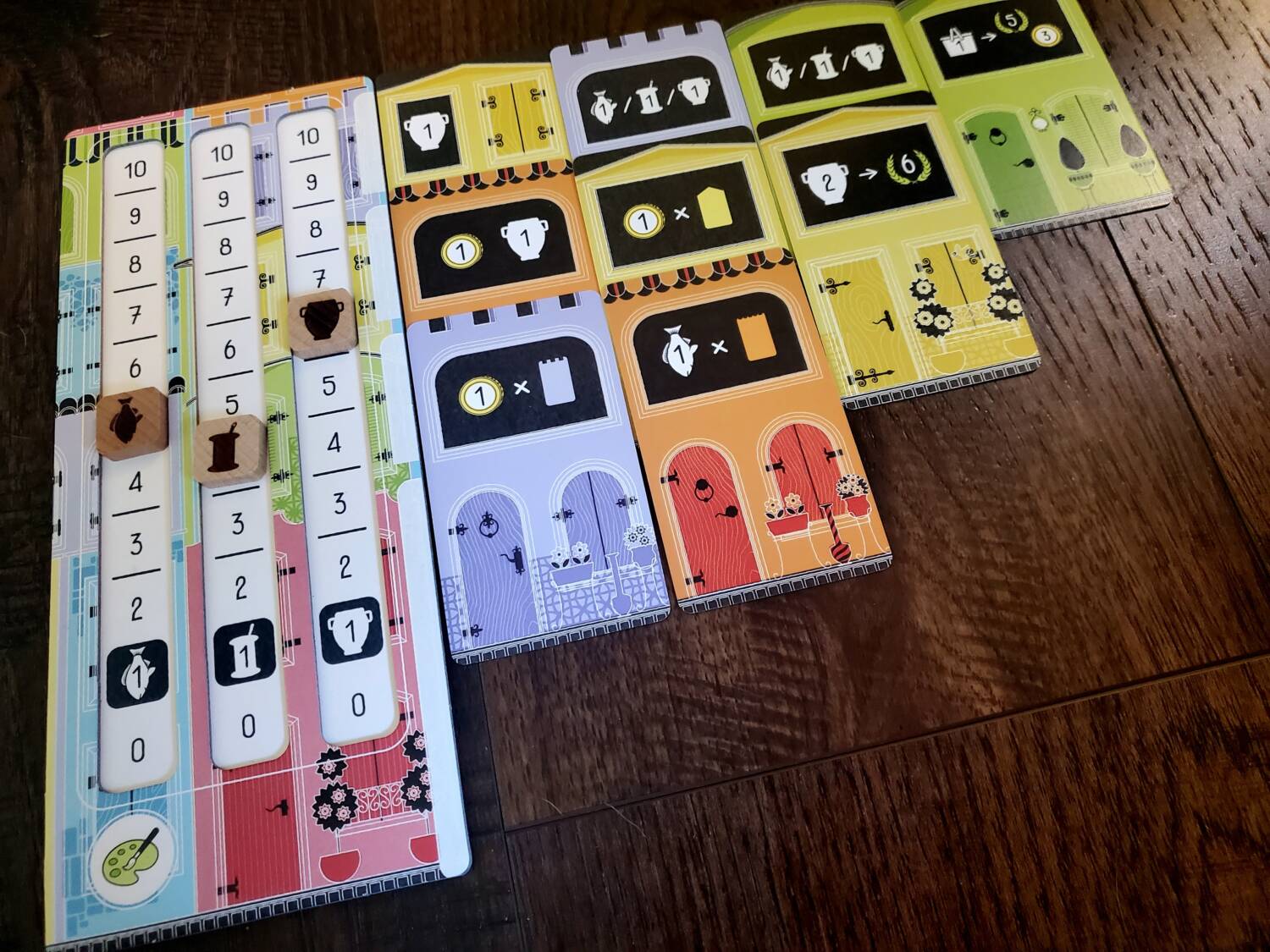
Players spend the game drawing one of four available cards from the central castle and adding it to their tableau. Upon placement, players trigger either the row or column that ends with the placed card. Each card either gives resources—fish, textile, pottery, or coins—or surrenders them for points scored in the central castle board. Following each of the three rounds, players must exchange as many coins for points as possible. By the game’s end, everyone owns a colorful 4×4 grid and a lofty position on the scoreboard.
The play is easy enough to describe in 87 words, but the puzzle of the cards is the heart of Bosa. The townscape cards are divided into three seasons of increasing heft. The goal is to build an engine that can produce both from left to right and from top to bottom so that every placement yields an abundance of goodies and/or points. The mandatory coin expenditure is a beautiful design choice as well. Players must reach for both the accelerator and the brake, though, because more coins are good until the maximum exchange is reached—excess really is waste (despite coins being the tie-breaker).
For the Mensa enthusiast, Bosa comes with a module of goal cards to add to the mix, limiting rows, columns, or quadrants to only two colors, for example, or surrounding orange cards orthogonally with a full variety of colors. The rules suggest giving four to each player, who will then choose two to apply at the game’s end. We’ve tried that, but also tried placing them as public objectives to add the tension that comes with open knowledge. Honestly, both methods work. What’s more, mom and dad can use the objectives and run a side bet while even the smaller kids join the fray and stick to the basics. Every combination is a winner.
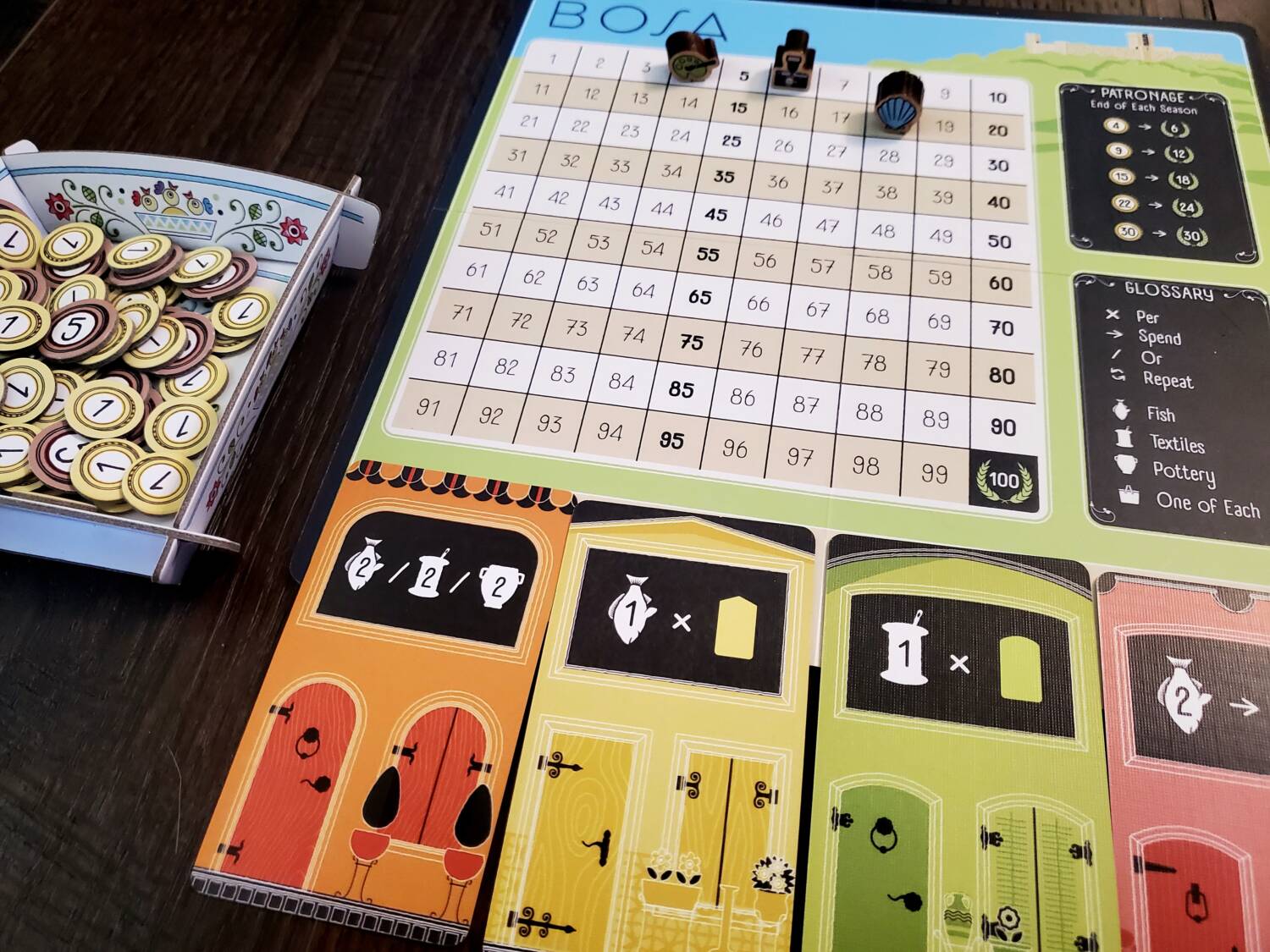
The rules are laid out well, and I must give the Funko team credit for juggling so many variables with style. Each of the six card colors depicts a slightly different house shape atop the card to help with recognition. The white-on-black resource icons stick out like sore thumbs, making the path easy to read while still matching the Italian inspiration for vibrancy. There is a glossary at the back of the book, but I only read it because it seemed like I ought to for the review—the whole experience is highly intuitive.
The negatives are nit-picky. I wish I didn’t have to rebuild the cardboard tray (the coin stock) for every game. I’m immediately tempted to remove or modify the box’s cardboard insert on that fact alone. Interaction is the other—the only things added to the game by more players are more time and wilder swings of the card market. Bosa thrives at two and three players, but it still welcomes more with relative ease.
Ultimately, the only reason not to like this one is if you’re not into this sort of game in the first place. Some folks avoid the puzzly grids and track-pushers and whatnot. Bosa is a lovely distillation of simple ideas in a small box that plays quickly. And to top it off, I’ve already begun pining for a trip to Italy.


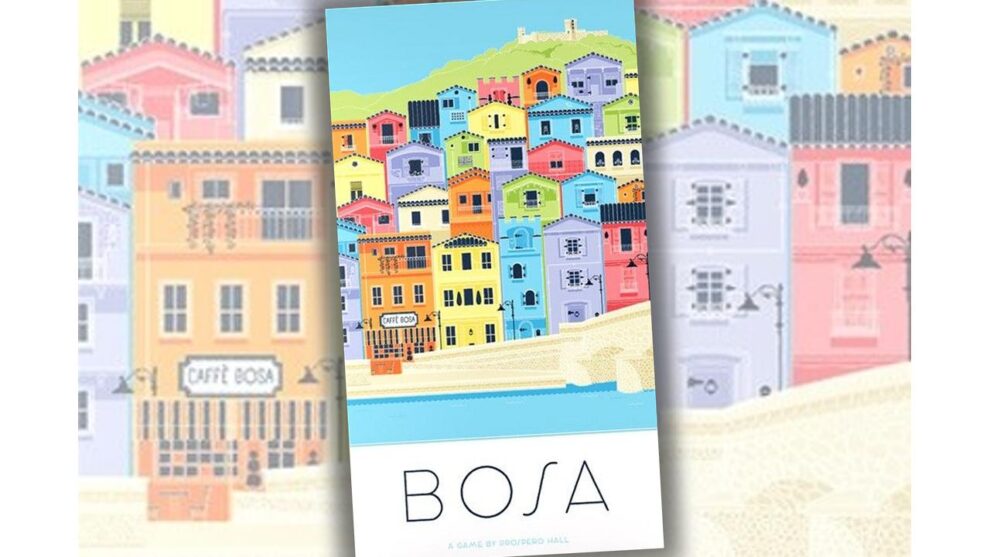
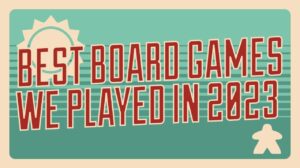
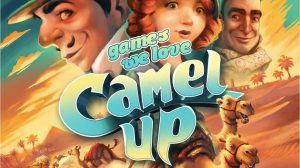
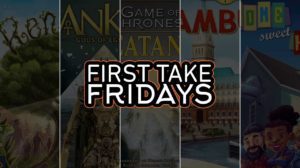





Hey Bob! Somehow I didn’t see this review until now but I was the lead designer on Bosa and I’m glad to see that you liked it! Thanks for the review!
Greetings Aaron! Bosa is a lovely design, and one that has been a fast hit with the family. All the best in your work!